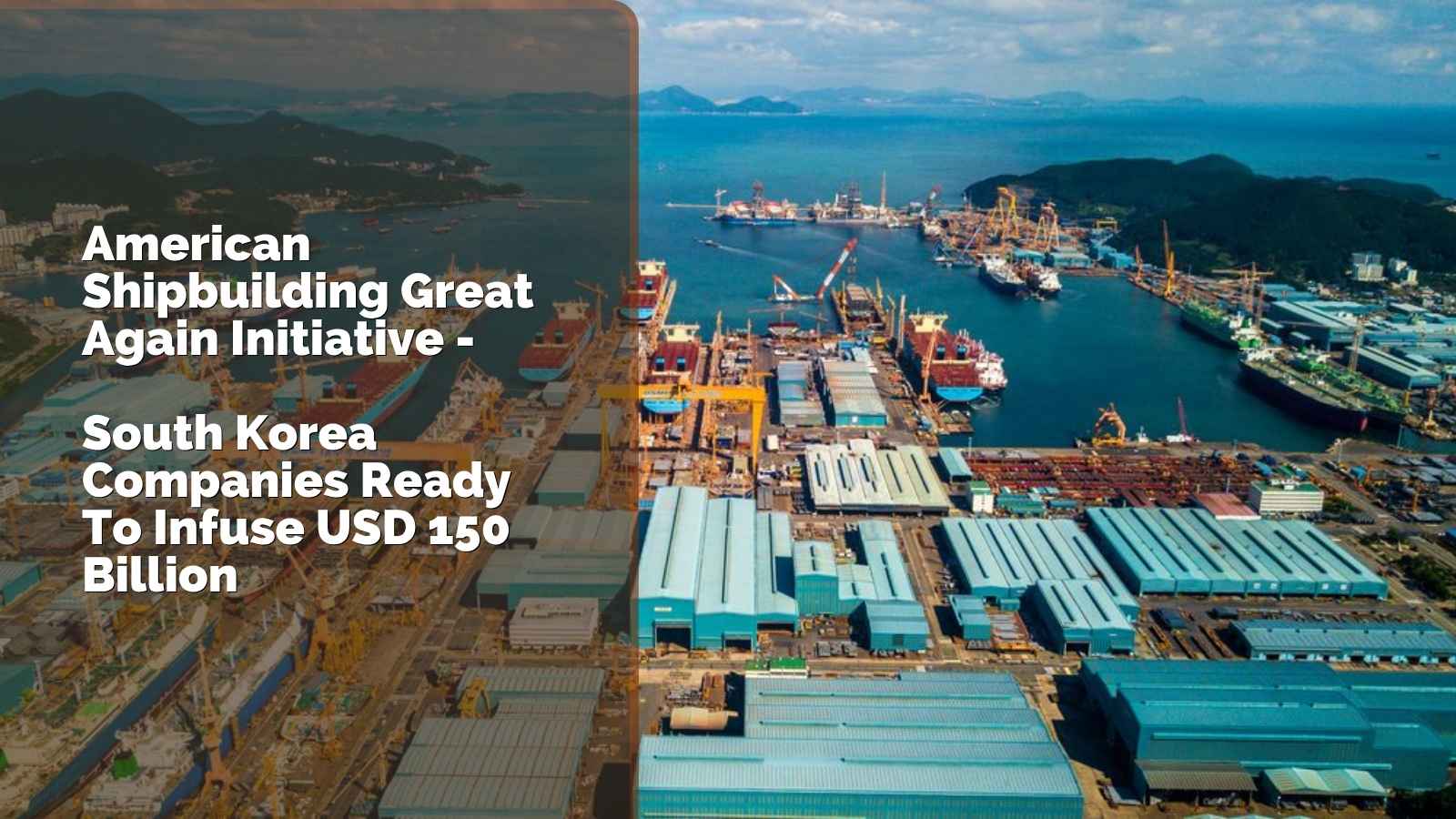The American Shipbuilding Great Again initiative is a wide-ranging effort, launched through executive orders and substantial legislative proposals in 2025, to renew the U.S. shipbuilding sector. Growing concerns about America’s maritime industrial base, which currently builds less than 1% of the world’s commercial ships, gave rise to this program. China, on the other hand, manufactures about half of all commercial vessels worldwide, giving it a significant advantage and endangering the national security and economic prosperity of the United States.
South Korea has made a commitment to invest an astounding USD 150 billion in reviving the US shipbuilding industry, highlighting the changing dynamics of the global marine industry. The Make America Shipbuilding Great Again program was unveiled on July 31, 2025, and is a component of a larger USD 350 billion trade deal between the United States and South Korea. In addition to avoiding a high 25% tariff increase on Korean exports, the agreement lays out a plan for both countries to catch up in the global shipbuilding and maritime infrastructure markets.
It is looked for that South Korean companies such as HD Hyundai and Hanwha Ocean, actively will lead this project by constructing new shipyards, modernizing repair and maintenance facilities, and starting vessel construction in the United States. This is a attentive effort to reorganize the marine sector around cooperative industrial cooperation between the largest economic market in the world and Asia’s leading shipbuilding corporation, not just an economic boost.
For the global marine sector, this investment highlights a potential spin in maritime manufacturing geography. Over the last two decades, the Asian Country, China remains dominant player in shipbuilding industry, while traditional countries who also use to work in shipbuilding industry like the U.S. have seen their capabilities lowering down. Now, through the strategic South Korea’s investment, the U.S. is expected to back its role in ship production. This could drive competition, reform supply chains, and boost technological standards in the ship such as LNG carriers, autonomous vessels, and military support ships.
South Korea’s USD 150 billion investment serves as the basis of the newly signed trade deal with the U.S., which slashes tariffs from 25% to 15% on South Korean imports. In return, South Korea will open up to more U.S. goods, including agricultural products and automobiles. But make no mistake the real bargaining chip was shipbuilding. According to authority involved in the negotiations, the American Shipbuilding Great Again initiatives was crucial in securing benefits terms from the U.S. government. For President of the Unites Staes, who has long attacking the hollowing out of American shipyards, Korea’s proposal directly aligned with the government vision of reboots American industry through foreign direct investment.
The investment from the South Korea is expected to create new demand for ship equipment, components, marine engineering services, and training programs to rebuild the U.S. shipyard to meet the advanced technology. South Korean companies will likely to focus on local production, by forming joint ventures with U.S. based companies, and also imports advanced marine equipment thereby boosting standards across the industry. Moreover, the deal’s inclusion of maintenance, repair, and operation for the U.S. ship could help streamline lifespan support for vessels, creating a new economic pillar for both nations.
This remarkable agreement comes at a time when the marine industry is struggling with high fuel costs, strict environmental regulations, and unsure freight demand. By investing capital and industrial cooperation into the sector, South Korea and the U.S. are positioning themselves to lead in next-generation shipbuilding technologies such as advanced propulsion systems, new ship designs, etc. These investments will likely trigger cascading effects across ship classification, port logistics, and maritime software sectors.
Beyond shipbuilding, the South Korea investments into semiconductors, batteries, and nuclear energy, also found with dual-use applications in maritime logistics and naval defense. An additional USD 100 billion in U.S. energy purchases, including LNG and LPG, will also fuel marine transport needs and shipping contracts further stimulating ship construction for gas carriers and tankers.
In between the opportunities, challenges also remain a part. U.S. regulatory barriers like the Merchant Marine Act of 1920 could complicate foreign investment in domestic ship construction. There are also workforce shortages and supply chain bottlenecks to overcome. However, the sheer scale of investment and the urgency of reshoring industrial capability suggest that political and logistical hurdles will be addressed with serious commitment.
In conclusion, the USD 150 billion shipbuilding initiative is not purely a business tactic it is a strategic reformation of the global marine industry. It offers a outline for how government-private industrial cooperation can reshape the shipping industry and set new standards in technology and sustainability. As the plan unfolds over the coming years, marine stakeholders worldwide such as shipbuilders, suppliers, port authorities, etc. will be watching closely.











